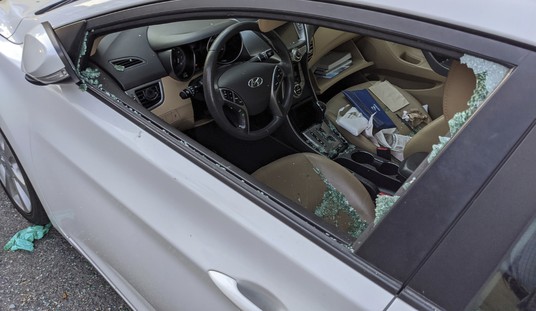The author in a firing stance
The goal of any combat shooting stance is to put your handgun up into the position where you can make the most combat accurate hits in the shortest amount of time.
Your stance functions to align your point of aim, your front sight, your rear sight, your dominant eye, and to get all four points into a straight line. Your stance is your shooting platform for launching your bullets. As such, your launching platform needs to be stable, balanced and mobile. It needs to be a fighting stance—a power stance.
We also need to hold the handgun the same way every time. Our grip on the gun needs to be firm and consistent. It needs to allow us to retain the gun and to isolate our trigger finger.
We have a problem if we are all over the place. The problem is that we are shifting the whole aiming burden to our dominant eye and overloading our dominant eye, when our body should be indexing and aiming the gun.
The Isosceles stance
This stance, or way to hold the gun out, is basically like a tripod or isosceles triangle. It is a two-handed technique in which the dominant hand holds the handgun and the support hand wraps around the dominant hand.
When seen from above, the shooter is pushing, or punching, the gun outward towards the target with his arms, and the handgun makes the apex of an isosceles triangle, the equilateral legs of the triangle being the shooter’s arms, and the base being the shooter’s body. Different shooters will have different degrees of bend in their elbows and that’s just fine.
Viewed from a side profile, the shooter should be leaning forward aggressively in a vulture like position—the shooter’s nose in front of his shoulders, his shoulders in front of his hips, and his hips in front of his feet. The knees should be slightly bent.
The shooter’s feet should be shoulder width apart, and the leading foot should be the foot opposite the shooter’s dominant hand.
The shooter’s dominant side foot should be to the rear wedged into the ground, toes pointing outboard to about 1 to 3 o’clock for a right handed shooter, and to about 11 to 9 o’clock for a left handed shooter.
The Weaver Stance
This shooting platform was developed by Los Angeles Counter Deputy Sheriff and IPSC pioneer, Jack Weaver, and popularized by Col. Jeff Cooper. The Weaver Stance is a two-handed technique in which the dominant hand holds the handgun and the support hand wraps around the dominant hand.
However, unlike with the Isosceles stance, with the Weaver, the elbow of the dominant arm is slightly bent towards the ground, while the support arm elbow is noticeably bent straight down, or pointed down, towards the ground. The shooter pushes forward with his dominant hand while the support hand exerts rearward pressure. The resulting isometric tension is intended to lessen and control muzzle flip due to the gun’s recoil when it is fired.
Also, in the Weaver Stance, the shooter is bladed toward the target. That is, the chest of the right handed dominant shooter is facing towards around 1:30 or 2 o’clock, and the chest of the left handed dominant shooter is facing towards around 10:30 or 10 o’clock.
The Chapman Stance
This shooting platform was developed by the late Ray Chapman who was a champion police combat pistol shooter, IPSC pioneer, and a range master at the Los Alamitos County California Police Department.
The Chapman Stance is a two-handed technique in which the dominant hand holds the handgun and the support hand wraps around the dominant hand. It is a variant of the push-pull, bladed Weaver Stance.
However, unlike with the Weaver, the dominant arm is held rigidly, like a rifle stock—the dominant arm elbow locked and parallel to the ground. The non-dominant arm’s elbow is pointed down towards the ground like with the Weaver.
Personalizing your stance
Every shooter must find or adopt a stance that is comfortable for him or her, based on his or her body type and physical condition. It is not necessary to perform a “perfect” Isosceles, Weaver or Chapman. For most of us mere mortals, pain or physical limitations prevent us from achieving an ideal stance.
However, that is just fine, and it need not affect one’s consistency. A less than perfect stance that is consistent can still function to reliably index the gun and deliver the front sight to the target.
Let’s examine some of the common ways your stance may deviate from the ideal Isosceles, Weaver or Chapman launching platforms–which deviations will mess up your speed and accuracy and which ones will not.
1. When employing the Weaver stance, is not a problem if your elbows are too far out; that is, slightly “chicken winged.”
2. If your gun rotates slightly counterclockwise (if you are a right handed dominant shooter), or clockwise (if you are a left handed dominant shooter) when you employ the Weaver stance, it is not a problem.
3. Trembling won’t make you miss. The front sight will be vibrating a little. Just hold it on target as steadily as you can as you press the trigger. You will be just fine. Massad Ayoob refers to this as “the wobble zone”. It will not affect combat accuracy.
Don’t fight recoil
A wide and stable power stance in any of the above modes will help you control your gun’s recoil.
However, recognize that recoil is due to physics. You must accept the fact that the gun is going to jump in your hand. It’s not going to hurt if you have the right gun for you. If a gun’s recoil hurts you, then you may have the wrong gun for you, or you may be holding it improperly.
While you should not fight with recoil, you should not just ride it either. Riding the recoil can serve to exaggerate it, and this brings the gun much further up than it needs to be before it settles down. You need to be in control of the gun as you shoot it, not vice versa.
Also, do not anticipate the recoil and shove or jerk the gun forward to fight the recoil. Let the gun recoil naturally–it will settle. You need a firm hard grip-but not a death grip. A firm grip will handle the recoil just fine. Shooting a gun is a process. The process will go off naturally if you don’t try to over-control or over-think it.
Your stance should keep you balanced
Don’t lean too far forward or backward (at all). Keep your feet on the ground. Remember that if you have to draw your gun on someone, you must be prepared to fight. Your stance should be a fighting stance.
The purpose of a fighting stance is to keep you stable so you cannot be knocked off balance by your opponent. The boxer’s stance must serve to protect him from his opponent’s blows. In a combat situation (a fight), you must stay balanced so you can be mobile.
You need to have an aggressive fighting stance–your shoulders in front of your hips and your hips slightly in front of your feet. Knees should be slightly bent.
Non-dominant side foot should be forward and dominant side foot rearward digging into the ground for stability. You need to be able to fight in any direction.
Do not thrust yourself too far forward. If your opponent is smart, he will outflank you and take the upper-hand.
When Your Shooting Platform is Inadequate
There are situations in which it may not be possible to get into a good shooting platform or stance-for example, when you are behind cover or concealment.
Another situation would be if you are physically disabled to the point where you cannot adequately align your point of aim, front sight, rear sight, and dominant eye so as to get all four points into a straight line.
This could be due to diminished eyesight, upper extremity range of motion limitations, or being confined to a bed or wheelchair, among other factors.
For these situations, good technology, along with good training with the right equipment, may provide a viable solution. I am talking about laser sights.
A laser sighting system can facilitate accurate shooting from behind cover and concealment and in low light stress-fire conditions. That is why S.W.A.T. teams using full cover behind ballistic shields often employ laser sights.
If you have to hide behind an automobile engine block, a bed, bookcase, or some other available barricade, shoot from a prone position, or shoot with your weak hand, a reliable laser sighting device on your handgun may still afford accurate shot placement.
LaserMax is a company that has been making reliable laser sighting devices for the major brands of handguns for years. Their sights are rugged, user-friendly, and easily installed by you, the end user, internally in your handgun as close to the bore of the firearm as possible. This allows for the closest and most consistent relationship between your point of aim and point of impact.
Because LaserMax sights feature a distinct on-off switch that can be easily activated by both right-handed and left-handed shooters, there’s no need to alter your grip and compromise your shooting accuracy to activate the laser beam. Additionally, the laser need not inadvertently reveal your position while you’re drawing from your holster.
Last but not least, an intuitive, easy-to-operate laser sighting system such as the LaserMax can help new shooters learn sight picture and trigger control more quickly.
Both live and dry fire practice with a good laser sighting system in your handgun can help you develop good trigger control and reinforce your muzzle discipline.









Join the conversation as a VIP Member